








The magazine of the art-form of the photo-essay
“A free, really high quality photo-essay magazine. Fabulous!”
Stephen Fry. British actor, writer and film & documentary maker

August 2015 back issue
by Phil Moore



Tunisia and Egypt were wracked with protests, their leaders eventually stepping down, but Libya's moment to overthrow
their dictator, descended into conflict.
On February 17, 2011, a series of protests escalated into armed uprising in Libya, as citizens demanded an end to Col.
Muammar al-Gaddafi's 42 year-long rule and the installation of democracy. Eastern Libya, centred on the city of
Benghazi, was "liberated", and became the base for the opposition forces, whilst the inhabitants of Misrata, further west,
fought a bloody battle for their city.
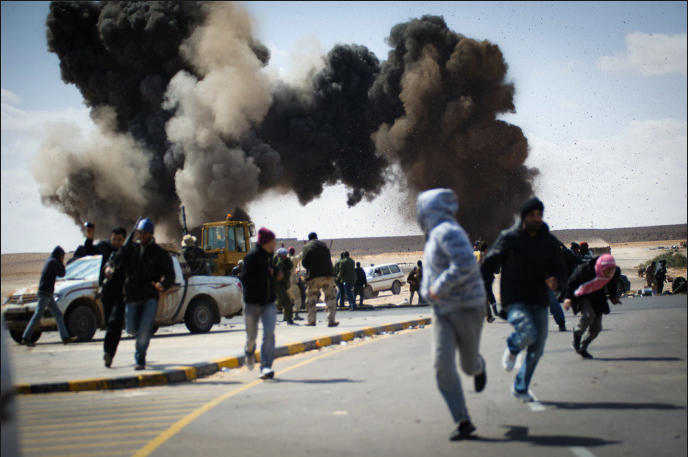
As rebels took arms and fought Gaddafi's loyalist troops, the regime bombed revolutionaries in the desert towns
stretching from Ras Lanuf to Ajdabiya.
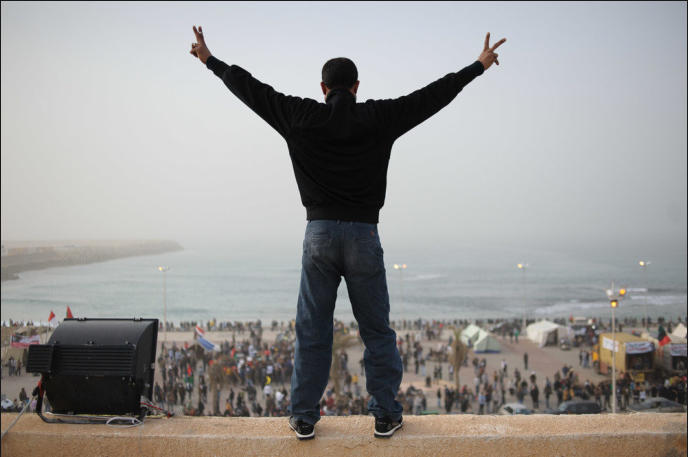
During the fighting in the desert, Benghazi became the bastion for revolutionary sentiment. During a demonstration in
the second city, a youth stands atop the courthouse, as hundreds of people gather below to commemorate the martyrs
of the revolution, singing "we will be here until the pain will be removed".
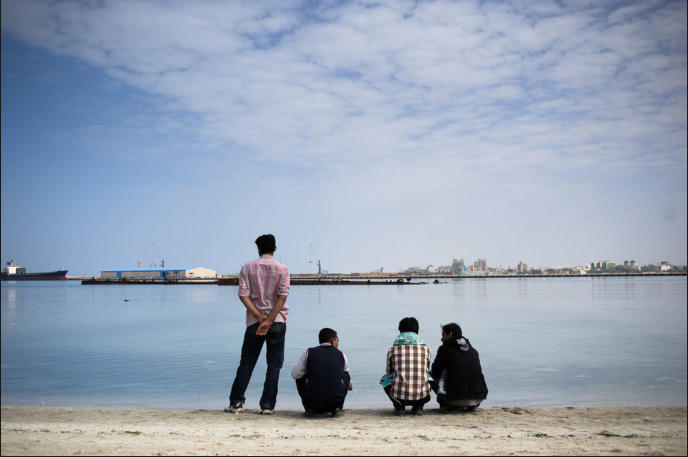
Thousands of migrants were trapped in the country. Hundreds of Bangladeshi workers found themselves caught at
Benghazi's port; having been left by their employers, they found themselves without their passports, and with very little
money, not having been paid for several months.
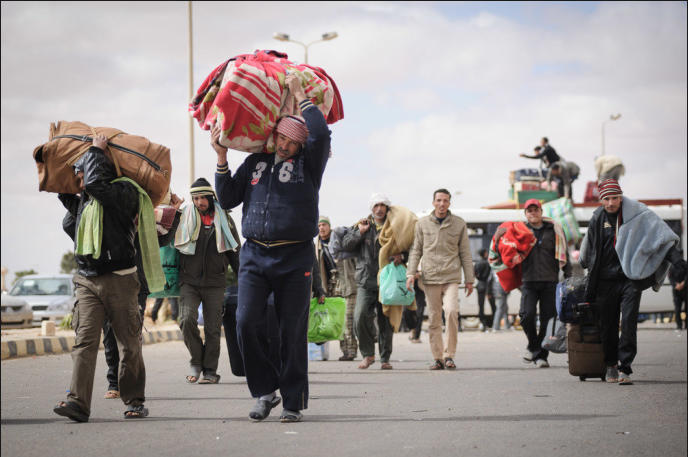
For those that could flee the violence, Libyans and ex-patriates alike, they fled across the border into Egypt, bus-loads
arriving every day.
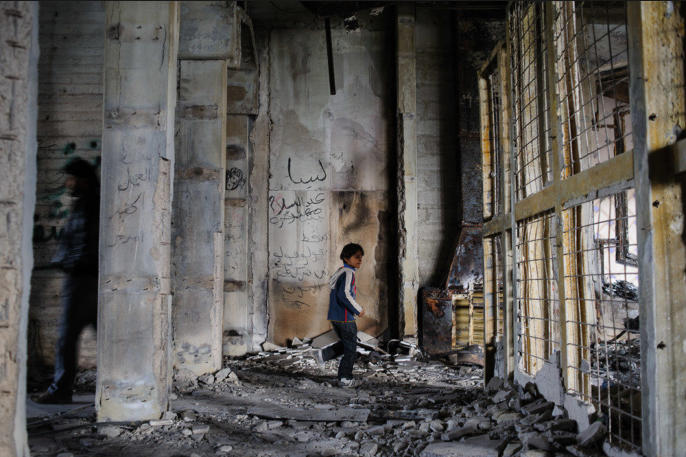
Many of Benghazi's inhabitants remained in the city, and sites such as the former army barracks became attractions to
visit.
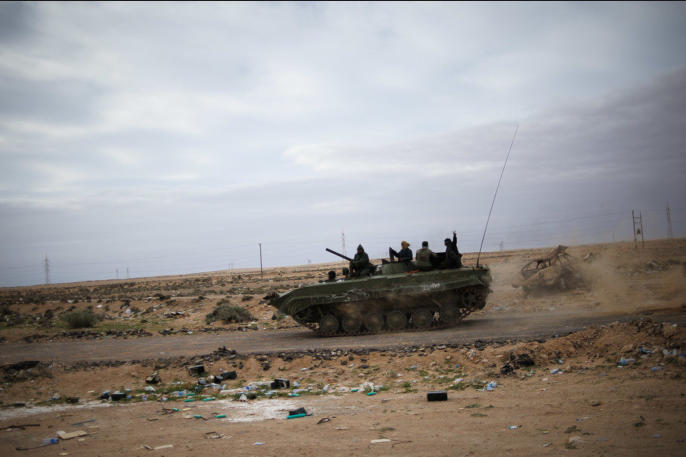
To the south, the front-line between rebels and loyalist troops shifted back-and-forth through the desert, with much of
the early fighting between Ajdabiya and Ras Lanuf. Much of the rebel weaponry came from stockpiles left by retreating
loyalist troops.
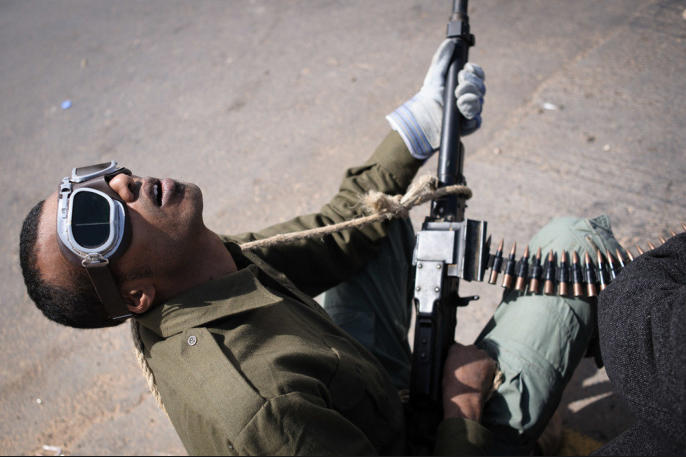
On the front-lines, rebels—many of whom had never fought before—were watching the skies for regime jets.
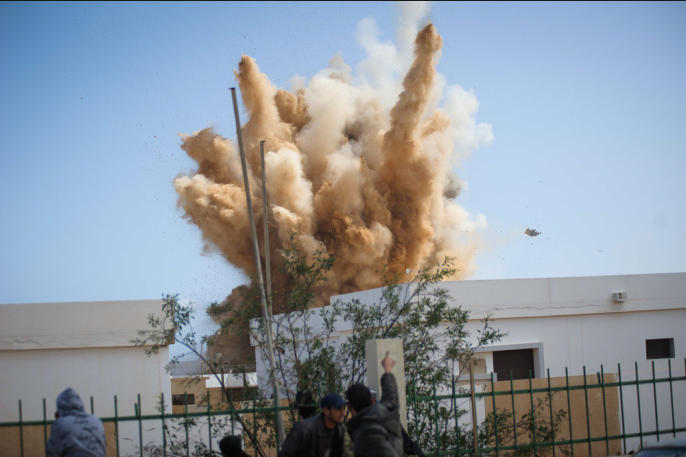
Bombings were frequent, and prior to the NATO-imposed no-fly zone, rebels had little protection against the jets.
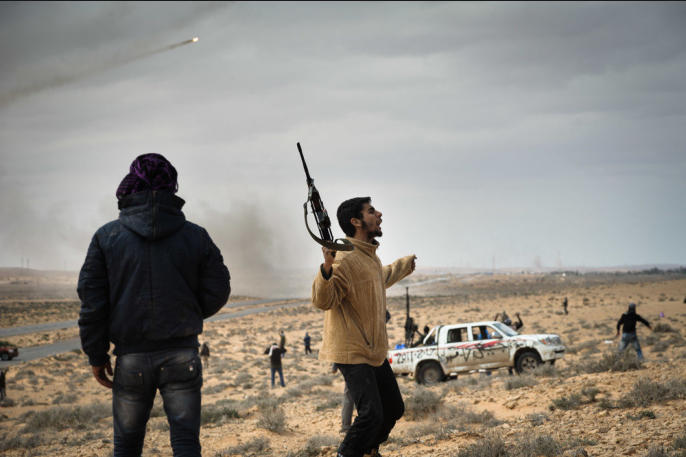
Seperated by a stretch of 10-20km, much of the fighting involved the exchange of surface to surface rockets and shells
along the coast road.
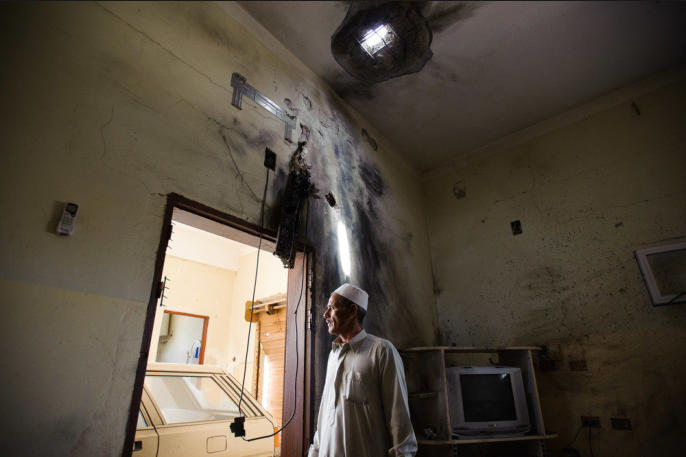
In Misrata, a town that became besieged by loyalist troops after anti-regime fighting broke out, shells rained down daily,
destroying civilian homes.
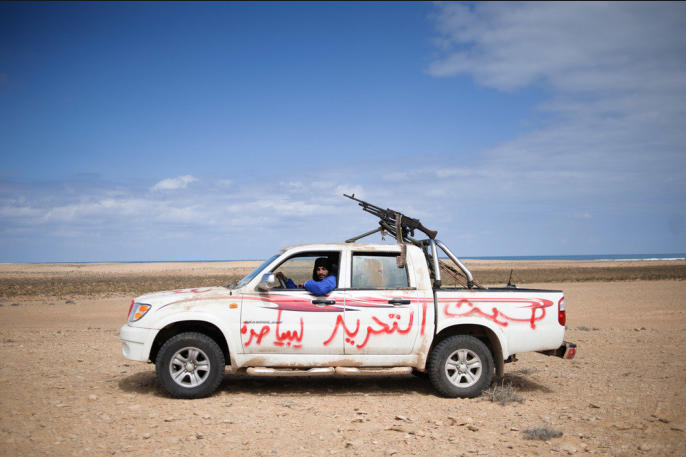
Improvisation was commonplace, with looted 4x4s converted into technicals, mounted with machine guns.
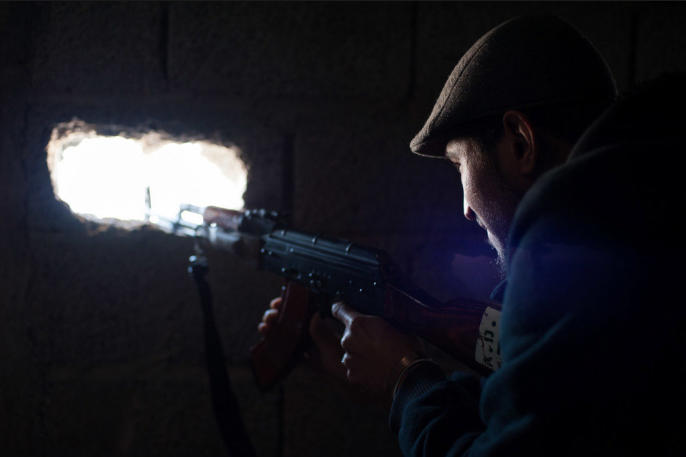
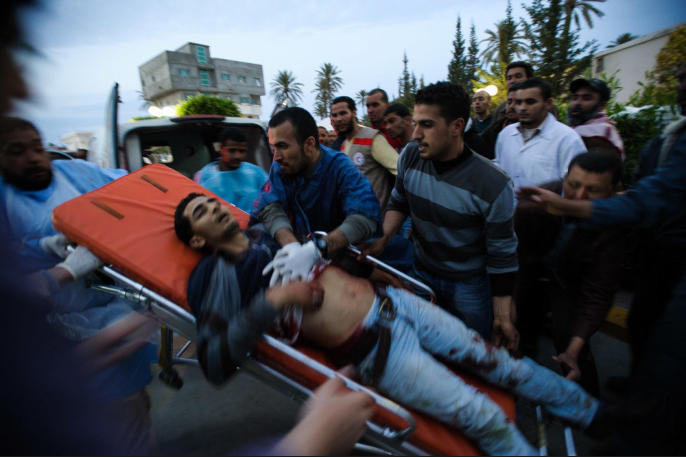
Casualty rates were high in Misrata. Many of the hospitals were abandoned due to shelling, and those that remained
were desperately short of equipment, electricity supplies and trained doctors.
In Misrata there were many inexperienced rebel snipers.
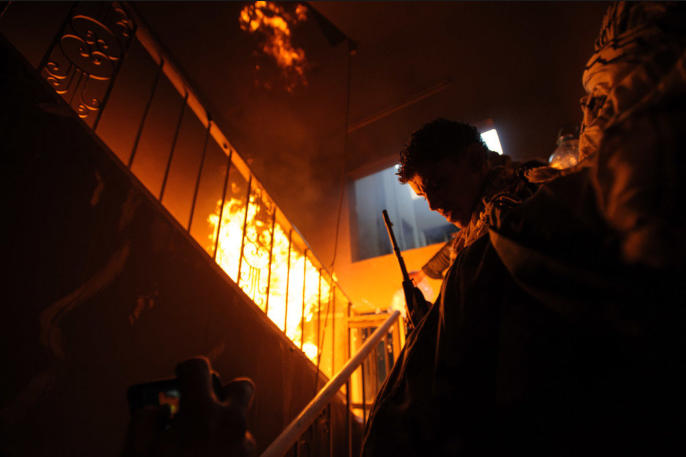
Tripoli Street became the epicentre of Misrata's fighting. A staircase burns after being hit by a rocket-propelled
grenade as rebels try to flush out loyalist troops.
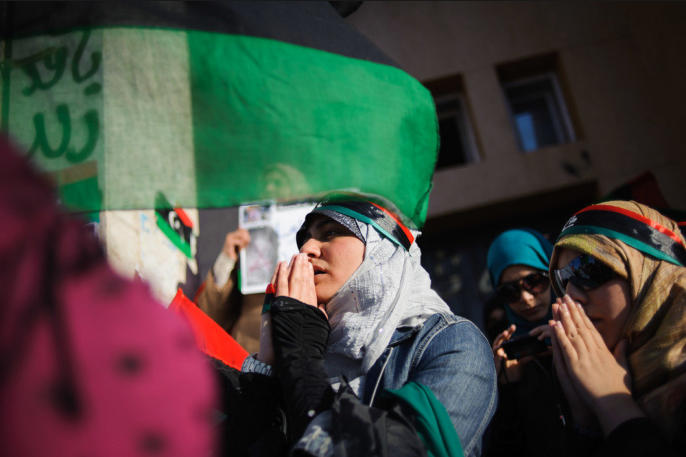
Many demonstrated in support of western intervention in the streets of Benghazi, whilst mourning the loss of so many
who had died fighting the regime.
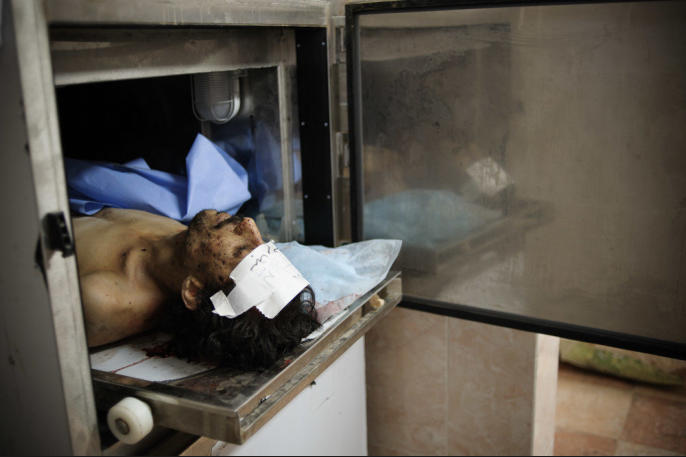
An unidentified rebel lays in Ajdabiya hospital. Normally, in following Islamic and local customs, the dead would be
buried before sunset. But this man, killed in the early days of the revolution, was unidentified, and so stored in
Ajdabiya's morgue, awaiting relatives to identify the body.
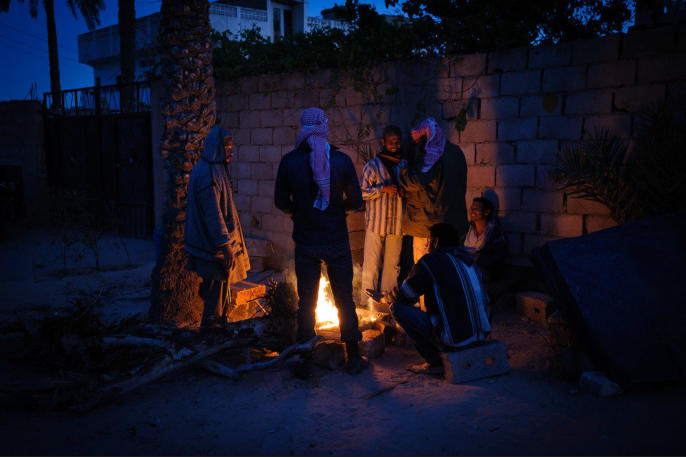
Rebels man a checkpoint at dusk in Misrata, mid-April 2011. It would take them over five months to finish their
revolution, ousting Col. Ghaddafi from Tripoli and eventually killing him in his birth-town of Sirte.







